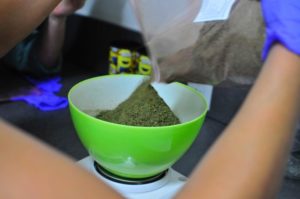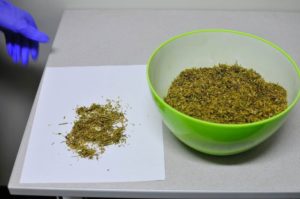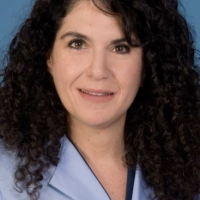September 20, 2019
We also spoke with her attorneys, who explained why they believed the DEA broke the law by holding up long-promised medical marijuana research licenses.

Dr. Sue Sisley
I first met Dr. Sue Sisley in person when she spoke in Las Vegas a few years ago. Back then, Dr. Sisley just entered the national spotlight, known as the research doctor who’d been unfairly fired from the University of Arizona for simply trying to study medical marijuana.
But at the Vegas event, she brought good news: She announced that other universities would host her research, and she recently applied for a third-party cultivation license from the DEA, the only federal agency that can legally provide cannabis for clinical study in the US.
At the time, the DEA said it would begin accepting applications for third-party marijuana growers after scientists had, for decades, complained about the highly restricted, low-quality cannabis the feds provided for research purposes. Since marijuana is federally illegal, the National Institute of Drug Abuse (NIDA), the FDA, and the DEA have only allowed one man, Dr. Mahmoud ElSohly at the University of Mississippi, to grow cannabis for clinical studies. Essentially, the federal government has monopolized cannabis research, and ElSohly’s product, according to some scientists who’ve seen it, is unsuitable for clinical trials.
Dr. Sisley’s announcement in Vegas was a big deal, since it meant her research group could one day grow its own high-quality cannabis, the kind that medical marijuana get from dispensaries and home growers. And time was an issue, since her research projects involved suicidal combat veterans with PTSD and stage 4 cancer patients who didn’t have long to live.
Later that night, everyone celebrated at a hotel bar. In hindsight, however, the celebration in Vegas was extremely premature.
It’s been nearly three years since the DEA announced its revolutionary cultivator program. The only problem is, the program doesn’t actually exist. The agency still hasn’t doled out any third-party grower licenses, even though 33 legitimate research groups, of which Dr. Sue Sisley’s Scottsdale Research Institute (SRI) is only one, have submitted applications. In fact, the DEA hasn’t processed the applications, though it gladly raked in about $100,000 total in fees for all 33 submissions. And again, the applications were submitted three years ago. For more information on this situation, see NORML Deputy Director Paul Armentano’s op-ed here.
Dr. Sisley isn’t just trying to study medical marijuana; she’s trying to get cannabis flowers approved by the FDA as tried-and-true medicine. “American research is so crucial because it’s the only way health insurance companies would be able to pay for cannabis the same way they pay for pharmaceuticals,” she told MERRY JANE over the phone. “It needs FDA approval.”
Fed up with the feds’ stonewalling of potentially life-saving marijuana research, in July, Dr. Sisley and the Scottsdale Research Institute filed a lawsuit against the DEA with two Texas-based attorneys, Matt Zorn and Shane Pennington. Since Zorn and Pennington reside in a prohibition state, neither of them has clients in the cannabis industry, nor are they affiliated with any cannabis activist or legalization groups. Further, Zorn and Pennington took on Dr. Sisley’s case pro bono. Read NORML’s coverage of the litigation here.
The court gave the DEA 30 days to respond to Dr. Sisley, SRI, and the other researchers who filed suit. But that window has passed, and the DEA still hasn’t explained why it didn’t process the cultivator applications for three years. Instead, the DEA said it would take public comments and establish new rules for handing out the licenses, even though dozens of researchers have already paid heavy application fees for their submissions. As Dr. Sisley and her attorneys play the bureaucratic waiting game, it looks as if the DEA is finding new ways to stall further while a court simultaneously has ordered it to explain why it’s stalling.
What caused the DEA’s three-year hold up? How has the federal government traditionally stalled cannabis research? What can cultivation applicants such as Dr. Sisley do now? To find out more, MERRY JANE spoke with Dr. Sisley and her attorneys about why she and over 30 other research groups don’t want the federal government’s bunk buds.

Photo courtesy MAPS
MERRY JANE: Dr. Sisley, you’re one of the few people who’s actually seen the federal government’s cannabis products. Can you explain how it’s prepared for shipping at the University of Mississippi and how it comes packaged?
Dr. Sue Sisley: Basically, it comes in these generic batches of either high-THC, high-CBD, or placebo cannabis. You have a very limited menu there, and they come in these ziplock bags. When you open it, it’s a greenish powder filled with extraneous plant material. So, there’s some flower; there’s some mixed stems and leaves, just ground-up fragments of the plant. It’s not just the tops of the plant — the flower — which is what we’d like to study.
Did the DEA, FDA, or University of Mississippi provide any lab results for the cannabis powders, so you know what you’re actually giving to patients?
Dr. Sisley: That’s one of the problems, and one of our legal arguments: There’s no transparency. Normally, when you do clinical trials — and for years I did trials for Big Pharma — you get a complete drug master file that would give you all the details about the drug: its properties, how it was manufactured, et cetera. There’s none of that available.
Even though the DEA takes millions of dollars of taxpayer money, they provide zero transparency. You’re not allowed access to the drug master file, which would be normal operation procedure in any other FDA trial.
The only other federal agency who has access to file is the FDA, and they refuse to share that with the public, which is already an abomination in my opinion. It should be challenged.
Many people have tried to FOIA that information, and they haven’t gotten it. Maybe you could try? [laughs]
So, as a responsible scientist, I’m guessing you went ahead and tested the DEA’s ground-up weed powder yourself instead?
Dr. Sisley: We did. We were the first scientists to do independent secondary testing [on the DEA’s cannabis]. We sent it out to other DEA-licensed labs and did three independent rounds of testing, just to confirm that it was even cannabis.
The testing did confirm that the [batch sent by NIDA] has cannabinoids, some very minute quantities of terpenes in it, and that it was cannabis. It was just diluted with a lot of extraneous plant material. So, that’s one way that they can really sabotage your study outcomes because the study drug is issued to patients by weight.
How is issuing cannabis to patients by weight a way to sabotage a medical marijuana study?
Dr. Sisley: In the last study we just completed, each patient got 1.8 grams [of cannabis] per day. So, if half of the weight of the study drug isn’t just the flower, then it’s all this other plant material — stems sticks, leaves — that’s weighing it down. And you can imagine how that would harm your efficacy data, because suddenly the patient may need to smoke two bowls just to get any therapeutic benefit, and by then they’ve developed so much bronchial irritation that they often can’t reach that therapeutic threshold.
We noticed that a lot of patients, after just a few inhalations, the mucosal irritation was so harsh from smoking that [marijuana] – which is not normal, right? If people are just smoking the flowering tops of the plants, they can easily tolerate much more, but most people could only tolerate a few puffs [of the government’s cannabis], and they’d have to stop. That’s why I’m concerned that the efficacy data is not accurate. It’s not reflective of real-world cannabis.

Photo courtesy MAPS
Why is Dr. ElSohly grinding up the weed into an unrecognizable powder? Providing full, trimmed buds would help with the harsh smoke.
Dr. Sisley: If you look at the quotes from Dr. ElSohly, he said that he’s not trying to make real-world cannabis. He’s trying to simply standardize this plant material for research, and that’s clear from what we’re getting. He may be achieving that, and he may be meeting whatever standards the FDA has set up, but if you look at FDA.gov, you’ll see how they define GMP, and it mentions things like “free from mold,” and, clearly, they’re already in violation of that.
You found mold in the DEA’s ‘research-grade cannabis’?!
The secondary testing we did showed ostensibly high levels of mold in all the batches. With these excessive mold counts, you’d very likely have mycotoxins present. We believe mycotoxins are harmful to health — and we don’t have all the details yet — but scientists suspect that [mycotoxins are] carcinogenic. How do I knowingly hand out contaminated study drugs to cancer patients — to sick people? It’s totally unethical. It puts me in a terrible position.
And the federal government has no qualms with American doctors dispensing moldy marijuna to patients? Cannabis dispensaries aren’t allowed to stock moldy cannabis, much less sell it.
I shared with my attorneys this ridiculous document that the DEA forced me to sign. It said I can’t receive [the government-grown weed] to conduct research unless I sign a paper declaring that I accept all liability for any harmful outcome from the study.
They won’t ship you the [plant material] without that — a contract that states that I’m finding the federal government harmless, that they’re not responsible for anything bad that comes from [their product].
Then, when they ship [it], it comes with a disclaimer that says, “By the way, this plant material is contaminated with mold and should be irradiated prior to use.” It’s just an unbelievable process that they’ve been able to get away with for so many decades. That’s why it’s so imperative that the government license other growers immediately, so we can start to put flower through the FDA process.
Now, here’s a question for the attorneys: According to your suit, the DEA’s inaction on these cultivator applications was unlawful and possibly unconstitutional. Can you explain your reasoning?
Matt Zorn: It is not our position that we argued that it was unconstitutional. We do think that it’s unlawful, though.
Shane Pennington: In 2016, the DEA said that it recognized, and held to be important, the due process interest of applicants who would respond to its cultivation licensing announcement by spending thousands of dollars and doing the work necessary to get an application in to the agency. Due process here is referring to the due process of law and amendments to the US constitution. Our point was that the agency’s delay had reached a point that it was unlawful under administrative law principles and the Administrative Procedure Act. That’s what made it unlawful.
Apart from that, we were emphasizing the government’s own statements, in its own public documents, recognizing that when it asked the public for applications, then charged them money to process those applications, there’s a due process interest in actually seeing that the law is followed and that the applications are processed. But to be clear, we weren’t bringing a constitutional challenge.
What was the application fee?
Dr. Sisley: I think we paid $3,100 to apply for the Schedule I license to grow. Back in 2016, when we submitted our application, they immediately processed my credit card, but they never processed the application, interestingly. Usually that goes hand-in-hand.
What was the DEA’s explanation for the hold-up? Or have they provided one yet?
Pennington: No, they haven’t explained it. The court ordered them to respond to our petition. That was back in July. There’s an order from the court that says responds to the petition within 30 days. That put them on the clock, and of course we’re all waiting around for what the explanation is. As the lawyers representing [Scottsdale Research Institute], we were particularly eager to see that explanation because we knew that there couldn’t have been a reasonable explanation under the circumstances.
But then, the day before the response is due, all of this other stuff happened: The DEA said it “noticed” all these applications – read NORML’s coverage here – they launched all this new rule making, and President Trump donates $100,000 of his salary to facilitate an announcement from the US Surgeon General warning about marijuana and the need for research because of the risks to pregnant women and children.
There’s just this huge media roll-out on the eve of this deadline to explain themselves. And of all of that talk, there wasn’t a single word explaining the delay. Nor was there an acknowledgement from the government that what it was doing was unreasonable, that it was legally obligated to process these applications quickly or within a particular time period. None of that. That kind of slipped past a lot of people.
A lot of doctors and medical organizations don’t view cannabis flower as a medicine because it can’t be accurately dosed when smoked or vaporized. What’s your response to those critics?
Dr. Sisley: I’m a physician, so I understand. I trained in the same paradigm as them, that you don’t view anything as medicine unless it’s been through the FDA approval process. That’s where the dosing gets established. But with botanical medicine, we’re trying to persuade the FDA that it needs a different paradigm. We’ve actually managed to have some real breakthroughs with the FDA as evidenced by our last study, where the FDA allowed self-titration. [Editor’s note: Self-titration is when a patient administers their own dose based on what gives them a therapeutic effect at the time, rather than following a strictly set dosing regimen based on a mathematical formula.]
I would argue that rapid self-titration is an appropriate method of dosing, and it’s the only right way of handling smoked or vaporized cannabis flower. You can’t force cannabis patients into dosing models. We showed that over and over again in our studies: The variations in dosing are so wide from one patient to the next that you can’t push people into it.
Patients have to start with the lowest amount, and if they don’t get an effect, they can repeat it until they reach their therapeutic range. That’s the most optimal way of dosing [with cannabis], and physicians need to learn to embrace that, or they need to learn to get out of the way.
Other countries, like Israel, are leading the way on groundbreaking medical marijuana research. Why is it important for America to join this research movement?
Dr. Sisley: That research is important, and thankfully other countries have a more permissible environment where they have multiple growers. Our country is the only one holding out on this single-supplier model and claiming international treaty obligations, yet there are all these examples of other countries that have multiple growers. That’s why you’re seeing a renaissance of cannabis research in these other countries.
And sure, we can use their data — we often cite it — but the point is: In this country, we pride ourselves on being at the forefront of the most important medical research in the world. So why are we relegating this [cannabis research] to other countries? We’re so far behind now that we may never be able to catch up. The more the DEA continues to delay this, the more our chances to be competitive in that arena is sabotaged.
Why do we even need other data if other countries are doing this? We’re trying to do non-profit drug development research at SRI. We’re trying to put flower through the entire drug development process. We just finished this FDA Phase II trial, and typically we’d be moving into Phase III now, but we don’t have a federally legal drug supplier for Phase III that can be sold as a prescription medicine.
American research is so crucial because it’s the only way health insurance companies would be able to pay for cannabis the same way they pay for pharmaceuticals: Our cannabis needs FDA approval. The FDA won’t consider clinical trials from other countries.
You can catch more of Randy Robinson’s writing at MERRY JANE’s website.
Posted in : ACTIVISM, FDA, GOVERNMENT, Medical Marijuana, Research, SCIENCE, Veterans











